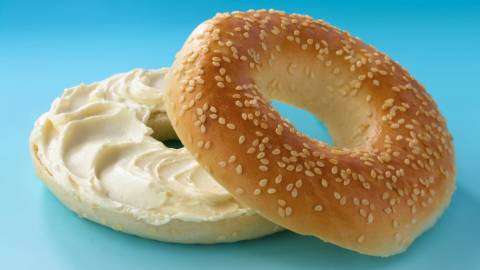In 1976, Associated Press reporter Jules Loh shared his advice for Southerners traveling to New York for that year’s Democratic National Convention. After explaining that New Yorkers say youse instead of y’all and can’t pronounce pecan correctly, he described their exotic cuisine. “They call breakfast breakfast, but ordering it will be a problem for you,” he wrote. “Forget grits, which are unheard of. They eat something called a bagel, which is as hard to describe as it is to chew. Don’t send it back—it’s supposed to be that hard.”

Around this time, bagels were transforming from a regional specialty item to a mainstream breakfast staple in the U.S. In 2020, more than three in five Americans reported eating bagels, and according to a survey from 2022, the average person consumes 38.7 bagels per year. The baked good can be found in supermarkets, fast food chains, and office break rooms across the country—though whether the frozen, pre-sliced version truly qualifies as a bagel is a matter of debate.
The bagel’s success is undeniable, but its path to breakfast dominance wasn’t straightforward. The journey was long and winding, and you can find out all about it in the latest episode of Food History. Host Justin Dodd walks us through the surprisingly complex science behind making these delicious treats, the etymology of the word bagel, and the New York versus Montreal bagel debate. Whether your go-to is everything, cinnamon raisin, or rainbow, you’ll want to watch.
Watch the full video on YouTube, and subscribe to Mental Floss for new videos every week.
This article was originally published on www.mentalfloss.com as How Bagels Changed the Breakfast Game.
